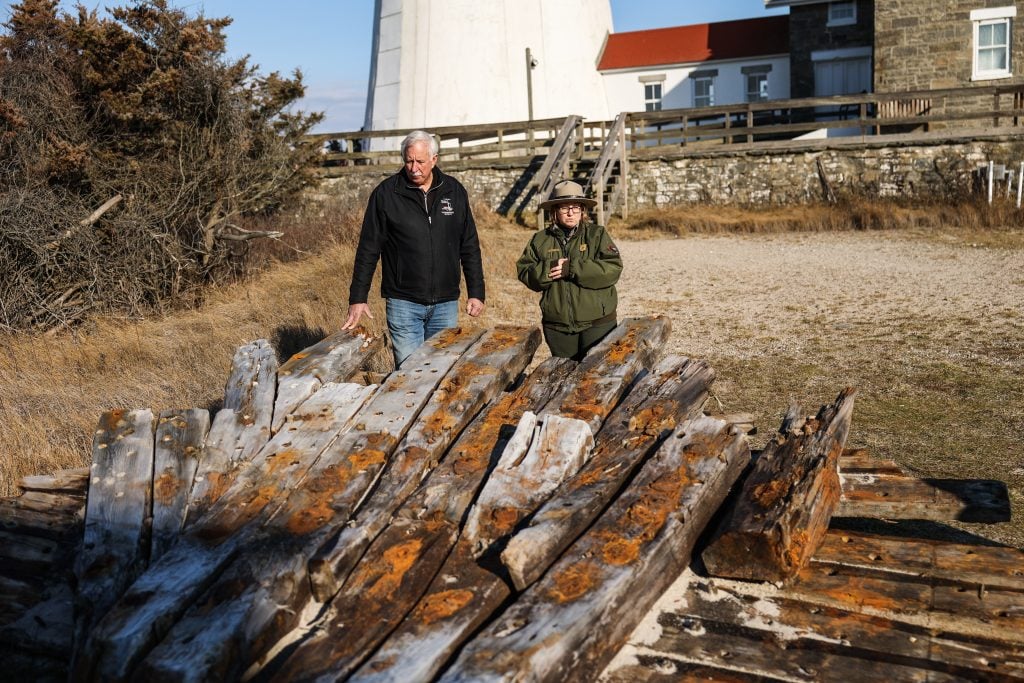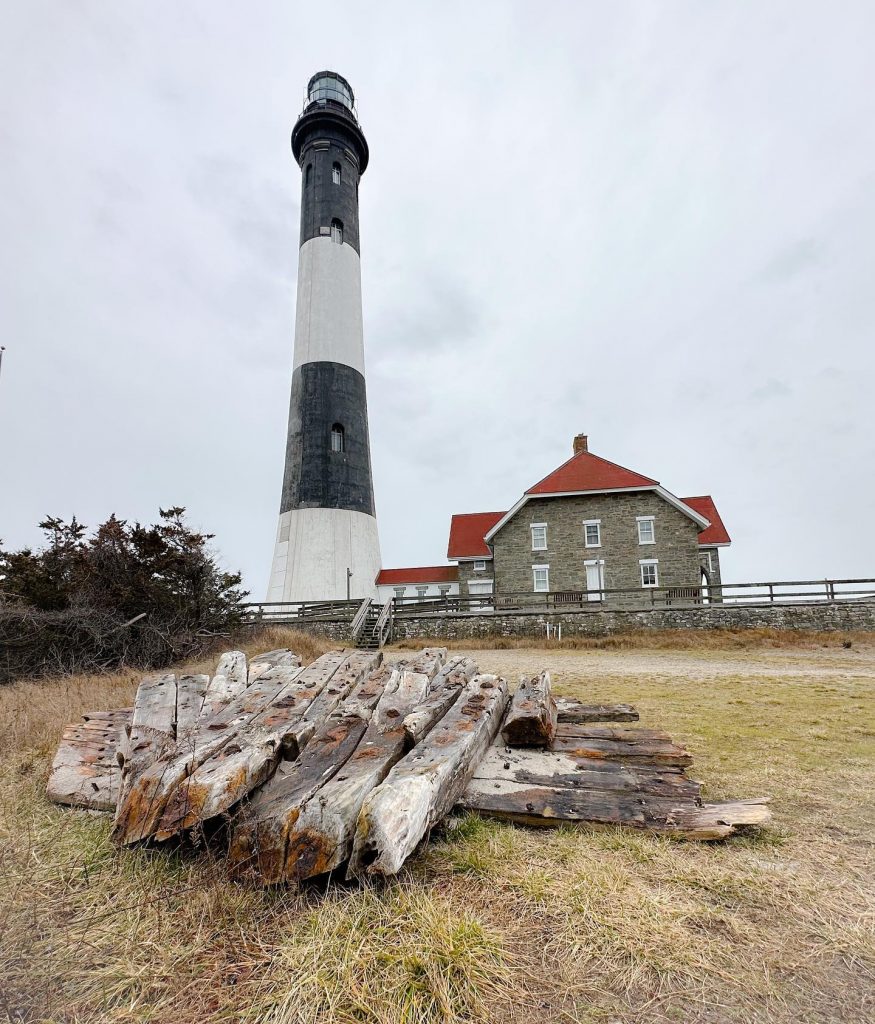Archaeology & History
Archaeologists Believe a Piece of Flotsam That Washed Up on a New York Beach Could be Part of an 1821 Shipwreck
The SS Savannah was the first steam and sail hybrid vessel to cross the Atlantic Ocean.

The SS Savannah was the first steam and sail hybrid vessel to cross the Atlantic Ocean.

Artnet News

Last October, a weathered hunk of flotsam washed up on a New York shoreline following Hurricane Ian. No plain marine debris, though, the wreckage, experts believe, could well have been part of the SS Savannah, the first hybrid steam and sailing vessel to cross the Atlantic Ocean, and that ran aground in 1821.
Measuring about 13 by 13 feet wide, the object is currently held by the Fire Island Lighthouse Preservation Society, which is working with the National Park Service to determine the origins of the wreckage.
“It was pretty thrilling to find it,” said Betsy DeMaria, a museum technician at Fire Island National Seashore, about the discovery. “We definitely are going to have some subject matter experts take a look at it and help us get a better view of what we have here.”
According to the National Park Service, the SS Savannah has emerged as the likeliest contender as it remains one of Fire Island’s best-known shipwrecks. Further evidence, too, lies in the one to 1.3-inch trenails, or wooden pegs, holding the wreckage’s planks together, fitting for a vessel measuring some 100 feet; and in the iron spikes present on the artifact, which were used in shipbuilding around 1820.
The SS Savannah was constructed in 1818—its partial steam-powered capabilities so heralded that the date it set out for its transatlantic voyage, May 22, 1819, is still commemorated as National Maritime Day.
For years after its famed expedition, the ship continued to operate as a commercial (though, alas, sailing) vessel until it was severely damaged by a storm off the coast of Long Island in November 1821. Its crew abandoned the ship, leaving it to drift and eventually fall apart. Searches over the next two centuries failed to turn up any artifacts related to the SS Savannah.
The newly discovered wreckage, which had been partially visible in the dunes about three miles east of Fire Island’s Old Inlet before it was pulled ashore, might represent that significant link. As Ira Breskin, a senior lecturer at the State University of New York Maritime College, told the Associated Press, “It’s plausible, and it’s important, and it’s living history if the scientists confirm that it is what we think it is.”

The wreckage outside the Fire Island Lighthouse. Photo: @fireislandlh on Instagram
As its research continues, the National Park Service has similarly emphasized that study of the wreckage could provide historical as much as environmental clues.
“Interpretation of the wreckage may potentially explore such topics as seafaring and navigation, the role of the United States Life Saving Service in the rescue and salvage of wrecked ships, goods, crews, and passengers, and the environmental changes that cause such wrecks to be buried and later exposed,” it said in a statement.
More Trending Stories:
Is Atlanta’s Art Scene Finally Achieving Critical Mass? There Are Big Signs That Point to ‘Yes’